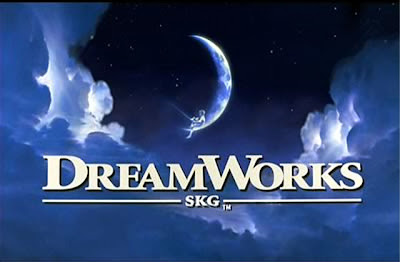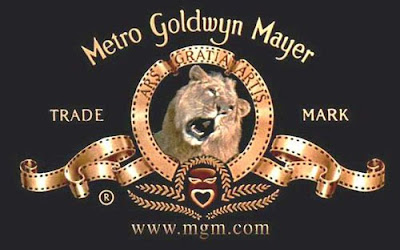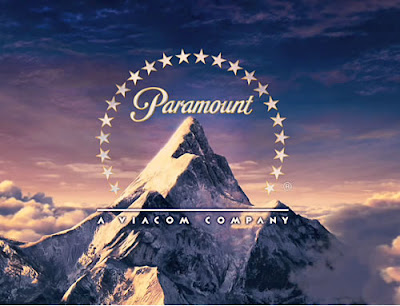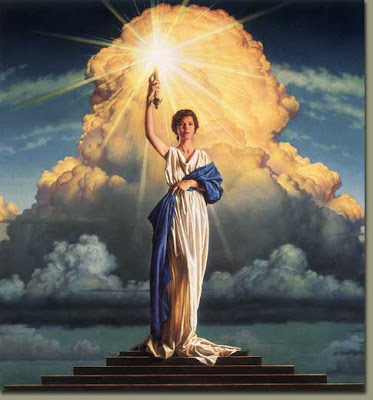Wednesday, 29 September 2010
Differences between conventional Film Trailer and Teaser Trailer.
Trailers often consist of many shots from the film, giving a strong storyline away, or sometimes just hinting. The convention trailer usually is shown for 2 -3 minutes. The Motion Picture Association of America (MPAA) mandates that theatrical trailers not exceed two minutes and 30 seconds in length. Conventional trailers are usually shown in adverts at the cinema, as it is an appropriate place as any, and has the full attention of its target audience. Usually trailers show the best parts of the film to interest the audience, whether funny or terrifying.
Thursday, 23 September 2010
Motion Picture Institutes
Looking at the majority most logos have the colour gold. The colour connotations say that the image is prosperous, wealthy and royal. The institutions chose this colour deliberately, that reason being that they want people to know they are the best and have the money. Most of the pictures again have a Sky image background, suggesting purity and innocence. The next significant feature that generally appear in most are the objects.
In the Dreamworks picture there is the moon featured in the background, in the Paramount picture there is a large mountain and the name placed on top of the landscape object. On the unnamed Columbia picture there is a lady holding a beacon of light, imitating the statue of liberty. All the objects included so far suggest the companies as large scale objects, making a good impression on the audience.
The MGM picture features a Lion, renowned as the king of all animals. It must have been once MGM's objective to make there image the most dominant in their class. The Warner Bros logo is of a shield, a strong object that is their for protection. The shield suggests that the institution is protected from any opposition.
The 20th Century Fox's picture is a low angle shot showing the Carved text 20th Century Fox Building/object. The shot type gives the institution a high profile type. The Gold Building shows their wealth on extreme levels. Its looks can be interpreted to look like a trophy, suggesting that they are the victorious.
The film Institutions are shown at the beginning of the showing of the film. The image is important as the audience knows who makes good films and the image of a major institution is the seal of approval in media. This will hopefully make positive first opinions.




Film Management stlyes
Key Terms:
- Vertical Integration - In management, the term vertical integration describes a style of Management control.
In the filming industry Vertical Integration is only used by the big 7 institutions:
- Dreamworks
- Warner Bros
- Paramount
- Twentieth Century Fox
- MGM
- Lionsgate
- Columbia
In this industry the Big five will perform all the productions, from Filming to cinema Production along with the subsidiary task such as DVD and Marketing. The big 7 companies do this because they have the money to do so. The end product tends to be of brilliant quality and a BoxOffice success.
The other management style is Horizontal Integration; where Independent or smaller institution produce the film only, along with other things, such as production manufacture, DVD distribution etc... whilst another company handles the cinema and marketing. The big 7 Institutions don't tend to do this, as they already have the money, time and organisation to do it.
Wednesday, 22 September 2010
Research techniques
Quantitative research – validation
Quantitative means: “that is or may be estimated by quantity”–Dictionary.com
So quantitative research basically means information that is measurable, quite often graphs and tables are used to represent the figures.
Closed questions
Structure interview
Structure questionnaire
Qualitative research – inquires
Qualitative means: “descriptions or distinctions based on some quality or characteristic”
Qualitative research focuses on the on the feelings and opinions. If I wanted qualitative answers then I could ask open style questions.
Qualitative researchers believe that being bias is good as it allows for individual thought. They will research the subject before arriving at a hypothesis.
Open questions
Instructed interview
Unstructured questionnaire
Triangulation is when someone merges both methods together in one questionnaire. Triangulation is also known as ‘cross examination’. This would create a semi- structured questionnaire.
It is the preferred line in the social sciences as it covers both sides.
Tuesday, 21 September 2010
Sunday, 19 September 2010
WHY DO WE...
WATCH MOVIES?
As as source of:
Entertainment - sustains the audiences interest.
Socialism- watch with friends and family, or to make/involve in a conversation.
Escapism- escape from reality, time out from stress and problems.
Education - learning from the film; film techniques and media studies, context in the film (religion...etc)
Visual Effects - partly entertainment, but persuades the audience its really happening and adds the the escapism effect.
Time Filling - to make time go quicker from doing nothing.
WATCH HORROR FILMS?
Culture and personal fears
- To overcome that fear
Voyeurism
- Watching something they would normally see in reality.
- Being nosey and taking an interest in someone else life.
Exploration of a taboo subject
- Watch something that is forbidden.
Perception of anti-mainstream activity.
- Wanting to visualise something illegal in real life. For example murder
Catharsis
- Experiencing something bad
- The achievement of watching
Intrigue
- People sometimes get so involved that they want to guess the storyline and plot. People often base their opinion of the film due to the plot and the unpredictability of it. Films like the Da Vinci Code and Angels and Demons are hard to understand due to the complexity of the storyline and the fact the storyline is mostly to do with religion, where people need a certain understanding and knowledge before hand to catch on.
Physical effects
- Computer generated imagery adds to the escapism effect which people want. People base their opinion of the film also on the quality of picture.
Saturday, 18 September 2010
Advertising Campaign
The companies that control the advertisments for a film are sometimes contractors that specialize in that criteria. This form of horizontal integration (managment style) is usually undertaken by independant film institutes.
The following are all types of advertisments that are seen used by film institutions to advertise their products:
- Theatrical Trailers- usually 2-3 minutes in length, gives lots of information on the product it's advertising.
- Teaser Trailers- definition is mostly in the name. It teases the audience into wanting to know more and lures them into watching it in the cinema. Between 30 and 60 seconds. Gives little information away, but gives the cast and crew to catch peoples eyes. Only few scenes are shown and so they have to be highly effective to lure the audience. This form of advertisement is usually shown to the target audience around 1 year before the release date, on cinema ads and the film website.
- Teaser Posters- released before film, may contain image of Main character, Title, Slogan, Cast and Release date.
- Film posters- mostly made as a spin off product once film is released. Features include all Main Characters, Cast, Title and Slogan.
- Billboard posters- These are the big posters that appear on the side of the roads that advertise a product. The large size brings a lot of attention. These adverts are usually found in highly congested areas of towns.
- Websites- Utilizing technology websites are created by the filming institutes to promote their commodity's to people closely over a far distance on the internet. The website would usually be made especially for a specific film. The site is likely to contain information of the film as well as the Teaser/Theatrical Trailers, Posters, and links to other related information.
- Television broadcasts (ads)
- Guerilla marketing- tends to be the unconventional system of promotions that relies on time, energy and imagination rather than a big marketing budgets to promote a product.
- Critical reviews- These are reviews from valid sources. These can be online or appear on a poster as quotations. IMDb is an official website made to review and hold information about films. They have a star rating systems rated from members. Other advertisements include quotes from other well known companies.
- Film magazines- Magazines that purely write about films come at a critical point of view. People buy these to read about films and to be persuaded to watch them.
- Cast and crew interviews- Famous people in the film may be asked to promote the film in an interview. This interview could either with a magazine/newspaper journalist, TV presenter, Radio presenter etc...
- Pop-up advertisements- surprise adverts. appears on non related website. Usually small in size.
- Merchandising- usually a spin-off item once the film has been released.
- Fake character profiles (social network sites)- This advertising method is far different to most, as technology has progressed to newer level. The character profiles are made based on the fictional characters in the film. This allows the audience to read up on the characters and get deep into the film. The profile allows the viewer to feel the effects of escapism
Friday, 17 September 2010
Elements to include
Research – primary & secondary, audience, media product/ area = codes and conventions
Time management – practical elements – time of day
- actor available + pay
- costume, hair and make up
- props
- equipment
- location – any location must have permission- they must see it so it doesn’t make them look bad
- permission – actors
- permission slip – school sign
Representation – how & why
Production and distribution - big production company – consent
- make up company
Technical language – analyse and justify everything
Wednesday, 15 September 2010
Planning ahead
Initial ideas
- Brainstorm possible ideas - for each idea make notes of the potential impact that the product would have on its target audience.
Group organisation
- Who's doing what? - Organised. Specific roles/ or working collaboratively.
- keep notes on what you did!
Changes and Developments
-Ideas will develop and change after the initial ideas have been noted.
-Show modification - indercates that we are always continuosly researching element.
Practical planning
- Storyboards
-Shooting Schedules
-Drafts
-Mock-ups
-Equipment Lists
-Location reports and description
-Print based material must be drawn up in mock-up, sample photographs drafts.
-ICT / new media product - could be in a form of a paper draft.
In Yesterdays lesson we were focusing on teaser trailers. The teaser trailer must be in the marginal space of 30-90 seconds. It must not give too much information away as it must tease the target audience and grab their interest, and then they will want to go see the production when it becomes available in the cinema.As a class we looked at the 2012 movie teaser trailer, and we evaluated the effects. The high quality of CGI makes the danger of the tsunami look non-fiction. The awkward silence of no sound suggest something bad is about to happen. The quiet yet spooky music adds a scary effect as it is in a parallel connection to the straight cut edits. The use of fade out and in edits suggests that the 2012 Tsunami can just happen in an eye blink. Narrative text engages the audience with the trailer, and helps the understanding of the audience. The text also communicates to the audience by rhetorical questions and commanding text, which tells the audience to research 2012 in google. Using many more techniques the film gained a huge public response worldwide. Causing controversy people in America, people were convinced in belief that the world was going to end, and needed to be reassured by NASA that is wasn't. Altogether though the film gained lots of attention and gained a success at the box office. Using the teaser trailer they made 2012 a public matter, subsequently gaining the attention of the target audience. From this lesson I have gained an understanding of the typical codes and conventions expected in a teaser trailer. The usage of the techniques has helped me gain inspiration into finding my own ideas to create dramatic effects.
Above is a scanned copy of my A2 handbook made by my teacher.It looks scary from the outside, and it is in the inside :DG324 - Advanced Portfolio A2 level 50% (Coursework) 100marks Candidates will produce:
A media portfolio, comprising a main and ancillary texts.
A presentation of their research, planning and evaluation in electronic format.
The media portfolio will produced through a combination of two or more of the following media:
- Video
- Web-based
- Audio
- Games and Software
The presentation of the research, planning and evaluation may take the form of any one, or combination of two or more, of the following:
- A blog or Website
- A podcast
- A DVD with 'extras
As you can see I have made a start on things. For the presentation of my research, planning and evaluation I have chosen to present my work on this blog. It's good for me as I am fully capable of blogging as I did it for my AS coursework.
The task allows us to work in groups of a maximum of 4 people. My group; Guiliano Rapoz, Ellie Gocher, Lewis Tillyer and myself are focused primarily on the 2nd task, which is to make a promotion package for a new film, to include a teaser trailer, together with two of the following separately:
- A website homepage for the film
- A film magazine front cover
- A poster for the film
The group as a whole gets on well, all of us a friends and carry individual advantages into the group. With different opinions with have combined them in a group effort to do the second task. We have an idea, which is to make a Horror themed narrative. We chose Horror because it has so many conventions that are easy to recreate. The conventions also seem unique to any other genre, and so straight away the examiner will have an instant understanding of the genre. We as a group feel comfortable doing this as we all love Horrors.
The individual tasks that are tied to the main task requires me to make either two of the three choices; a website, a film poster or a film magazine front page. I think I would be most comfortable in making the Poster and Website. The website I can make in Macromedia Dreamweaver. This software is similar to me as I designed a website at GCSE level in ICT. I also have this software available in my Personal laptop as well as school. The poster I can make easily in and out of school using programmes such as Adobe Photoshop and Macromedia Fireworks, as these are great picture manipulating software's.
Wednesday, 8 September 2010
The Group
I also attend a Northampton County Music Group on Saturdays, where I am studying the highest grade in my instrument (Tuba) discipline possible and can play Piano to a regular standard, and so can bring strong musical creativity to the group in the making of out soundtrack.





